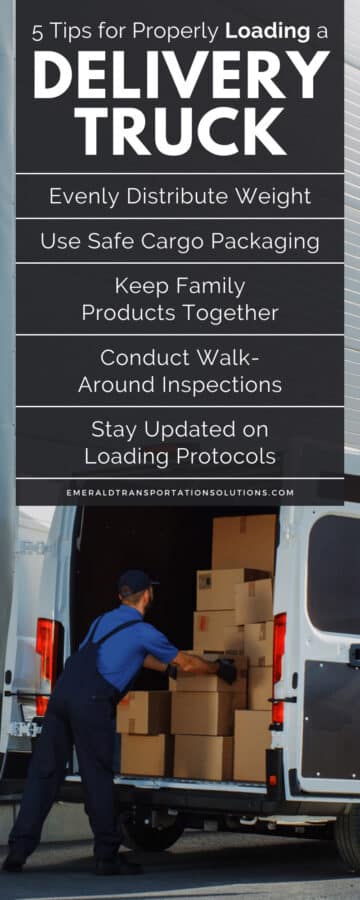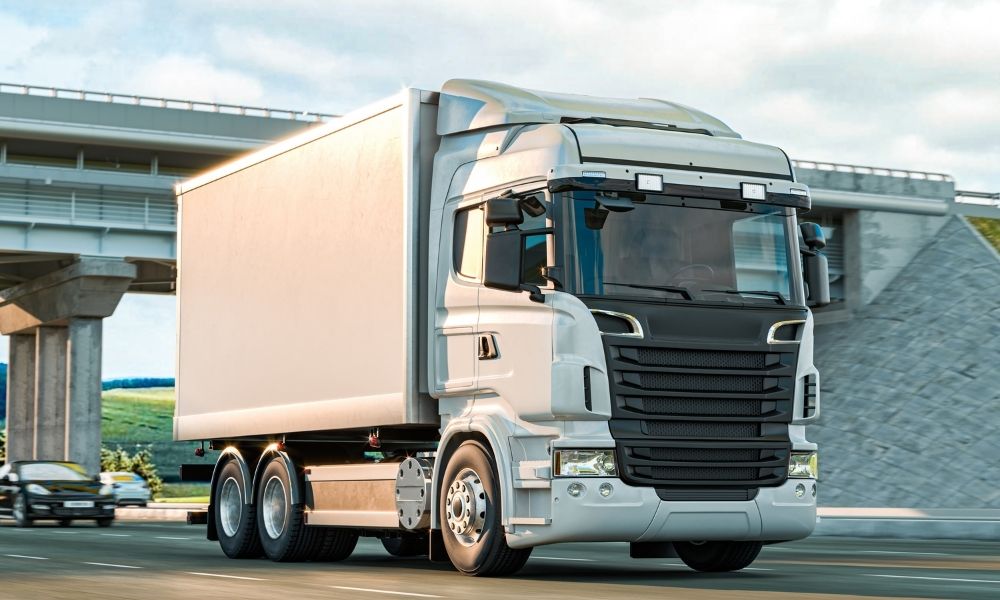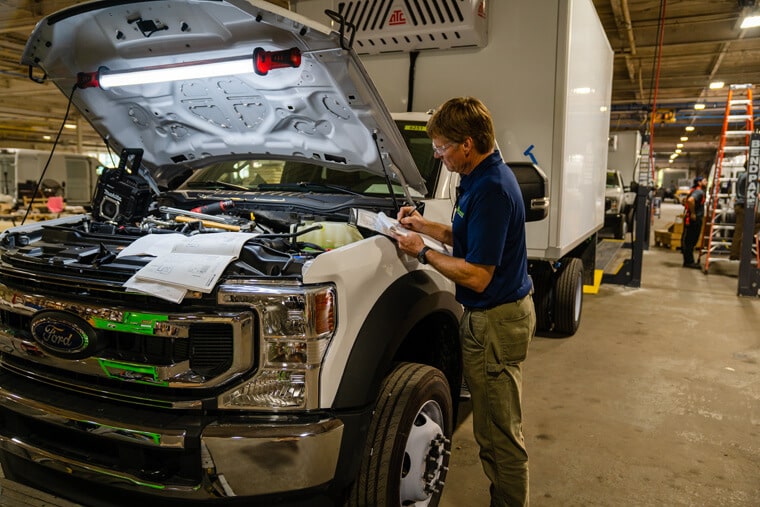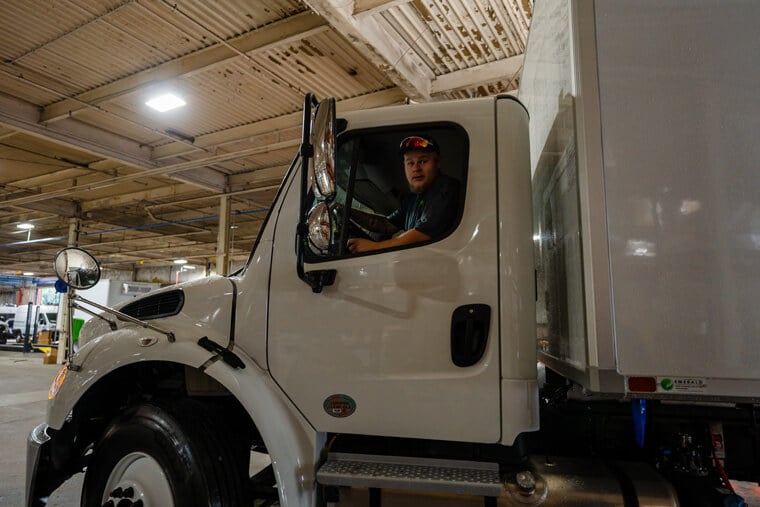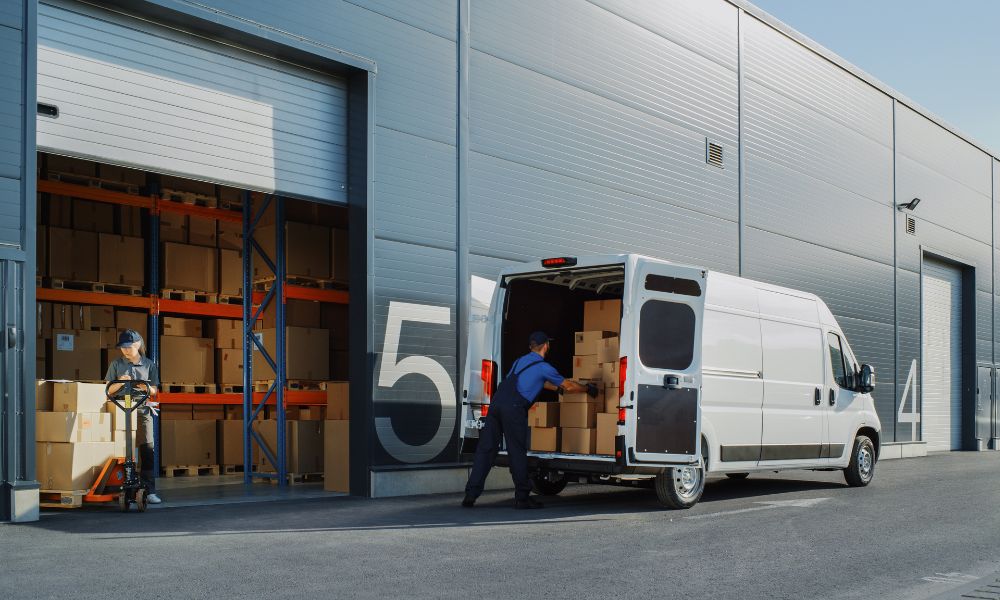
5 Tips for Properly Loading a Delivery Truck
Todd Cawley | June 29th, 2022
The transition of loading and unloading goods has an important role in the supply chain process. Properly loading a delivery truck affects the delivery time of cargo and, ultimately, the profit of a business. Efficient truck loading also helps secure the quality of goods during transportation and keeps the driver safe during loading operations.
Understanding proper loading techniques can also help you select the best vehicles for cargo transportation. For example, when viewing a refrigerated truck for sale, calculating the size of the truck against the collective weight of goods can help determine if it’s an appropriate vehicle model.
Before placing your next loading strategy into effect, consider these helpful tips for properly loading a delivery truck to prevent damaged cargo and keep transport personnel safe.
The Truck Size and Container
Developing a proper loading strategy depends on two primary factors:
- The truck size: Calculate the truck size to the container size for the collective weight. The collective weight determines the capacity of the delivery truck and what shipment requires.
- The container (bottom of the truck): Determine the container’s dimension and weight to select the best lifting equipment for loading and unloading cargo.
Tips for Properly Loading a Delivery Truck
It’s easier to adopt proper loading techniques after determining the delivery truck weight against the dimensions of the container. Dividing the weight by the square footage of the bottom of your delivery truck also helps you determine how much to load in different sections and how to avoid uneven weight distribution. You can protect cargo and save time by employing the following methods during the supply chain process.
Evenly Distribute Weight
Transporting packages that differ in weight means you place the container of your delivery truck at risk of becoming unbalanced. If you don’t evenly distribute the cargo weight throughout your delivery truck, it tends to cause movement in the container and trailer. Unevenly distributed weight can cause the load to fall over, especially during sharp turns, and places the cargo at risk during transportation. It’s important to remember that you should load the heaviest cargo beneath lighter items to avoid damaging products.
Be mindful of arranging the heaviest cargo toward the front of the delivery truck to avoid straining the rear axle. The rear axle powers the wheels of the delivery truck, and a malfunctioning axle puts you at risk of an accident on the road.
Use Safe Cargo Packaging
Efficient delivery practices require safe cargo packaging to protect the quality of goods during the transportation process. Damaged goods impact business profits and disrupt the supply chain process. Consider the following tips to help ensure cargo remains undamaged before reaching its destination.
- Arrange boxes in an interlocking pattern to avoid excess movement.
- Load heavy items first to ensure adequate space to stack lighter items on top.
- Be mindful of gaps between packages that require dunnage or fillers to keep cargo stable.
- Maintain adjacent pallets at level height inside the delivery truck to minimize height differential between packages.
Keep Family Products Together
The best practice for properly loading a delivery truck is also knowing how to properly unload one. The starting point of any delivery process begins at the warehouse. An efficient way to reduce warehouse travel time is by loading family products together at the same time and loading these multiple pallets of the same product in one shipment. Keeping family products together helps you and other shipping personnel easily access and retrieve the products during the unloading process.
Conduct Walk-Around Inspections
Before loading a delivery truck or any transportation vehicle, it’s important to conduct a walk-around inspection prior to transportation. A delivery driver must visually check for unusual odors, noises, or physical defects in the vehicle or loading equipment. It’s also important to verify that each compartment of the delivery truck has adequate space for the incoming shipment.
Strapping and tie-downs are essential tools for securing cargo inside of a delivery truck. Tie-downs help to prevent products from moving or damaging each other and help keep you and other shipping personnel safe during the loading and unloading process. Be sure to double-check if the straps and clips you’re using are sufficient to secure the weight of the cargo. If you’re experiencing trouble with straps and clips, it can slow down the loading process and overall delivery time. Invest in strapping that’s durable and easy to remove to avoid inefficient loading practices.
Stay Updated on Loading Protocols
Human error is one of the main causes of improper loading of delivery trucks. The best way to ensure proper delivery truck loading is to implement the right training and reinforce good loading practices in yourself and other shipping personnel. Consider revisiting training on these essential operations all delivery truck drivers should know.
- Safety protocols that meet OSHA (Occupational Safety and Health Association) guidelines
- The various types of loading equipment (forklifts, dock doors, etc.) and how to utilize them
- How to efficiently use the warehouse management system for day-to-day loading operations
- The best way to remove secured cargo safely and efficiently during the unloading process
- The fundamentals of ergonomic movements to prevent chronic or acute injury during the loading and unloading process
Additional Tips for Best Loading Practices
- Ensure the loading area has a firm, level, and clean grounding before loading cargo.
- Before parking at a loading station, use the brakes to stabilize the delivery truck.
- Clean the inside of the delivery vehicle between loading processes to avoid crates, cables, wires, or loose debris from damaging incoming shipments.
- When securing cargo in the delivery truck, be sure you’re using one tie-down for every 10 feet of cargo.
- Never load unsecured cargo on the backseat or by the rear window deck of your delivery vehicle.
- Use a tarp to protect smaller cargo and securely tie the tarp down with ropes or straps.
- During the transportation process, be sure to routinely check on the cargo for movement to avoid potential safety hazards during the loading process.
Investing in high-quality vehicles is a critical first step in the supply chain process. Emerald Transportation Solutions is your one-stop shop for all your delivery vehicle needs. Explore our broad selection of insulated trucks, vans, and reefers to optimize your transportation process of goods. Extend any questions about our product through our contact information today.
Related Articles
Contact Us
Feel Free To Contact Us If You Have Any Questions
What does under DOT mean?
Questions regarding DOT requirements come up often. 10,000 lbs GVW (gross vehicle weight) and over are commercial vehicles that fall under the Department of Transportation regulatory requirements.
What is the difference between GVW and payload?
GVW or Gross Vehicle Weight is the entire weight of the vehicle including the payload. The payload weight represents the amount of cargo you are hauling.
What is a self-powered unit and a vehicle-powered unit?
A self-powered unit has its own fuel source and will run independent of the truck. This is the heaviest and most expensive option. While vehicle-powered units run off the engine via a compressor mounted on the engine. These are less expensive and lighter in weight but you must run the truck or plug the electric standby into shore power.
What does K-factor mean and why is that important?
K-factor is a term that stands for the overall insulating value of the container (truck body). Quite simply the lower the K-factor the better the truck body will be able to maintain a given temperature and require less energy to do so.
How much lighter is a Poly Van vs a US spec body?
Poly Van bodies are very light. On average we estimate we are 75-150 lbs per foot lighter than a traditional sheet and post foamed in place body. These weight savings translates to less fuel burn and less CO2 emissions, along with added payload, the most important benefit.
